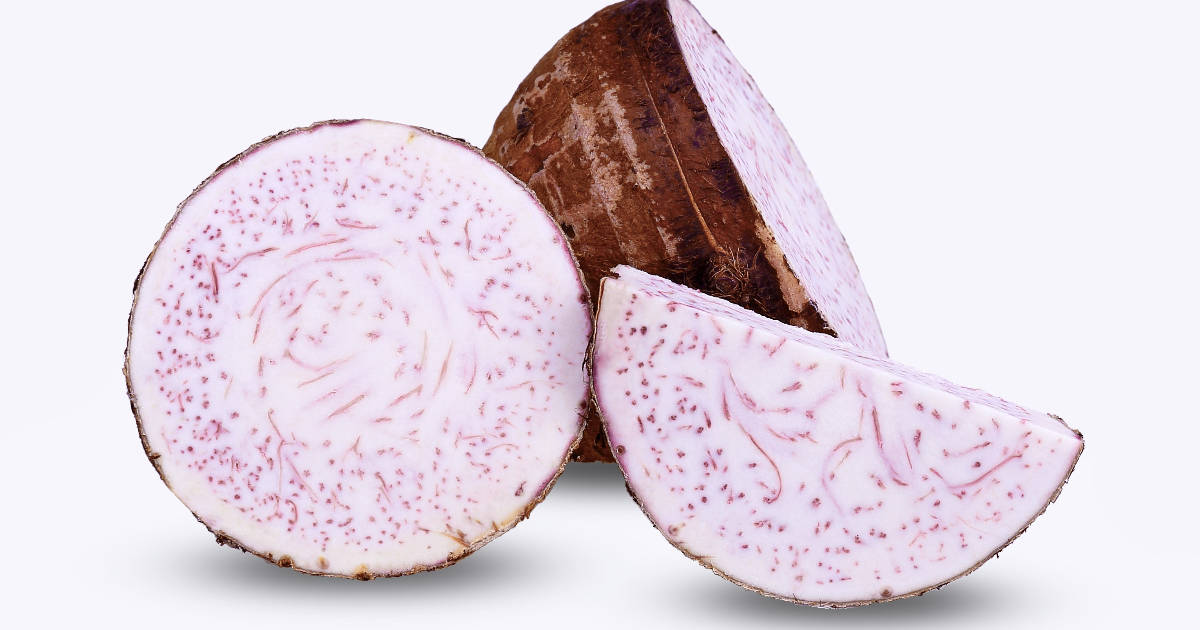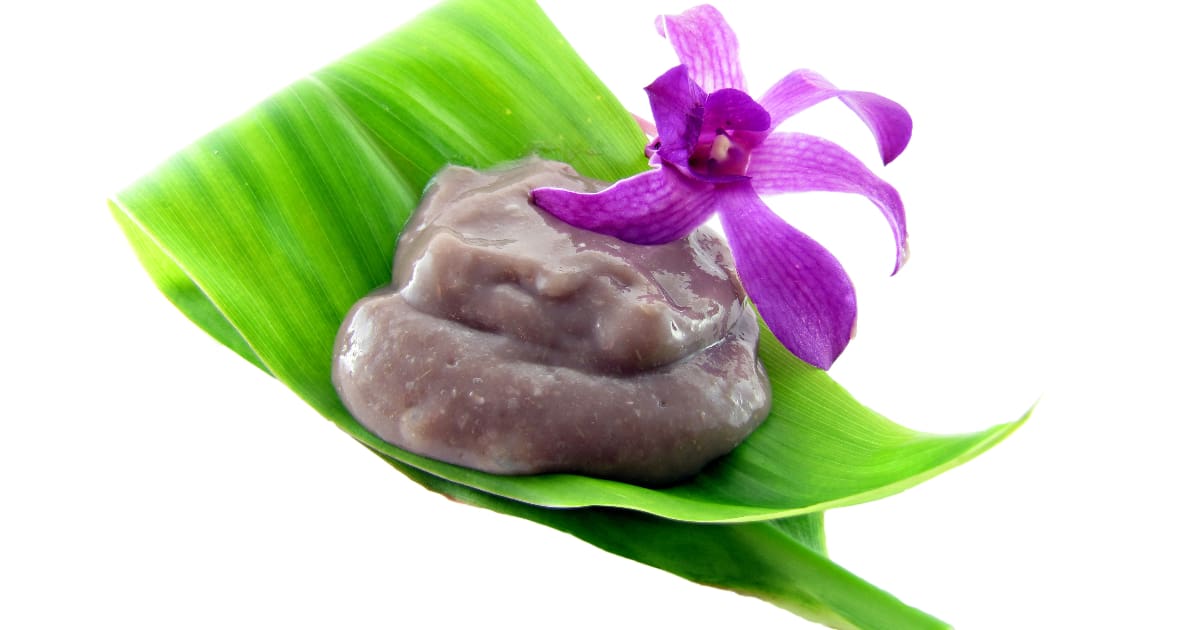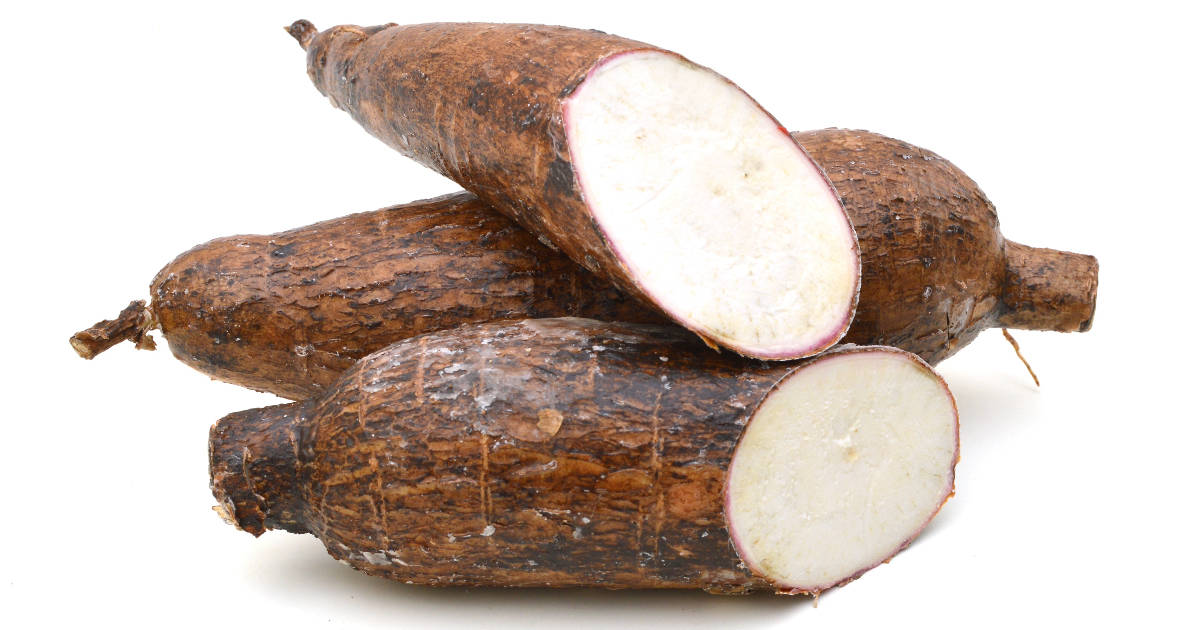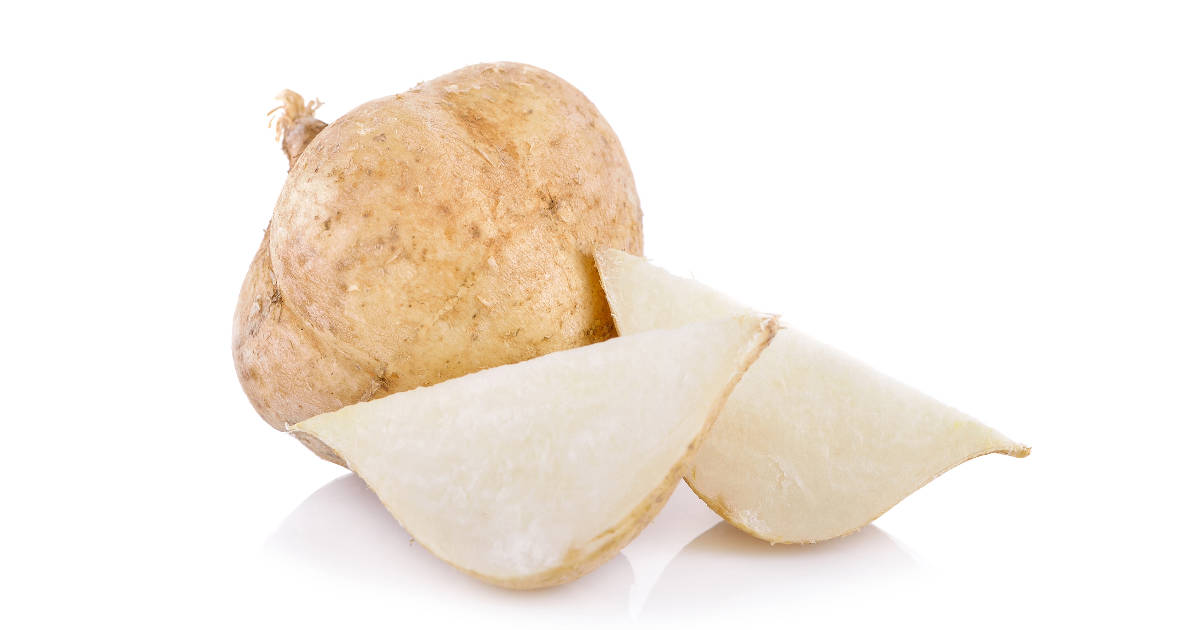Taro is a tropical root vegetable that has a sweet, nutty flavor and starchy texture. It's a popular ingredient in many cuisines around the world.

However, taro can be difficult to find depending on where you live. Fortunately, there are many great substitutes for taro that can provide a similar taste and texture in recipes.
Taro

Taro is a root vegetable that originated in parts of Africa and Asia. It's a staple food in many countries, including China, Japan, India, and Hawaii. Taro has a brown, hairy exterior and white flesh dotted with purple specks inside. When cooked, taro becomes soft and creamy with a subtly sweet, nutty flavor.
Taro root can be boiled, fried, mashed, or added to soups and stews. The leaves of the taro plant are also edible when cooked. In Hawaii, taro is a key ingredient in the traditional dish called poi. Poi is made by steaming and mashing taro root to create a thick purple paste.
In addition to its culinary uses, some parts of the taro plant have been used in folk medicine. However, taro contains calcium oxalate crystals that can cause mouth irritation, so it must always be cooked thoroughly before eating.
Why Substitute for Taro?
There are a few reasons you may need to find a taro substitute:
- Taro is not available where you live. Since it's a tropical plant, taro can be difficult to find in many temperate regions. It may only be available seasonally or not at all.
- You need a backup option. Even if you can sometimes find taro, it's a good idea to know of substitutes for times when the store is out or you forgot to buy it.
- Allergies or preferences. Some people are allergic to taro or simply don't enjoy the flavor. Having a substitute allows you to still make your favorite recipes.
- Cost. Taro is more expensive than common vegetables like potatoes. Substitutes can provide a cheaper alternative to recipes.
The Best Taro Substitutes
Fortunately, a few other root vegetables make excellent taro substitutes. Here are some of the best options:
Sweet Potatoes
Sweet potatoes are probably the closest match for taro in terms of taste and texture. Once cooked, sweet potatoes become soft and creamy with a hint of sweetness that's somewhat similar to taro. They work especially well mashed, fried, or added to soups in place of taro.
Japanese sweet potatoes are the variety that most closely resembles taro. However, any sweet potato variety can be substituted in a 1:1 ratio. Simply peel and cook the potatoes until tender before using them in your dish.
Yuca

Yuca, also known as cassava or manioc, is another starchy tropical tuber that can replace taro. It has a very mild flavor and becomes soft and creamy when cooked. Yuca can be boiled, fried, or added to soups just like taro.
One difference is that yuca has a waxy, not powdery, texture. But its neutral flavor and soft texture when cooked still make it an excellent taro substitute. Substitute yuca in a 1:1 ratio for taro.
Potatoes
Plain old potatoes can also stand in for taro in some recipes. Opt for starchy types like russets. Potatoes have more flavor than taro but can provide a similar creamy texture after cooking. They work especially well in soups or stews that have other strong flavors. Mash or dice potatoes as needed.
Keep in mind that potatoes brown faster than taro when fried, so adjust cooking times. The potato flavor will also come through more than the taro would. But in dishes with lots of seasoning, this impact will be minimal.
Parsnips
Parsnips have a naturally sweet, nutty flavor that's reminiscent of taro. Though they have a firmer texture when raw, parsnips become soft and creamy when cooked thoroughly. Their sweet earthiness complements many dishes that traditionally contain taro.
Substitute parsnips in a 1:1 ratio for taro. You may need to adjust cooking times since parsnips usually take a bit longer to become tender. But their flavor makes them an excellent option.
Jicama

Jicama is a crunchy tuber vegetable with a mildly sweet, nutty taste. When it's cooked down, jicama develops a texture very similar to taro and absorbs other flavors easily.
Use jicama in stir-fries, soups, and simmered dishes in place of taro. It may help to dice or slice the jicama small to aid the cooking process. And add a bit of extra liquid since jicama doesn't break down as easily.
Taro Substitutes for Specific Uses
In certain dishes, some taro substitutes work better than others. Here are substitutions tailored for specific uses:
In soups
For soups, opt for potatoes, parsnips, or jicama. Potatoes and parsnips will mimic the texture of taro, while jicama provides subtle sweetness. You may need to adjust cooking times for the substitutions.
In stir-fries
For stir-frying, try swapping in jicama, yuca, or sweet potatoes. Jicama holds its shape well, while yuca and sweet potatoes become tender. Adjust stir-frying time so the substitutes don't overcook.
In curries
In curries, sweet potatoes, yuca, and potatoes all work well. Their soft, creamy textures blend perfectly with the sauce. Potatoes will be the most different in flavor, but work in a pinch.
In desserts
For sweet dishes like cakes and muffins, stick to the naturally sweeter sweet potatoes, parsnips, or butternut squash. They'll mimic both the texture and sweetness that taro provides.
As a thickener
To thicken dishes like stews and sauces, potatoes and sweet potatoes work best. Just mash or puree them once cooked to create a thick paste.
Tips for Using Taro Substitutes
When swapping taro for another vegetable, keep these tips in mind:
- Adjust cooking times as needed based on the substitute used. Test for doneness frequently.
- Add extra liquid or cook with the lid off if substituting jicama, which doesn't break down as easily.
- Use flavorful seasonings and sauces to complement mild-flavored substitutes like yuca and potatoes.
- Fry substitutes like sweet potatoes in smaller batches to prevent crowding and uneven cooking.
- If possible, opt for substitutes that are native to the same region as the original taro recipe for the most authentic results.
- Sweeten desserts slightly more to account for taro's natural sweetness that substitutes may lack.
FAQs
What's the closest substitute for taro flavor?
Sweet potatoes likely provide the closest match to taro's sweet, nutty flavor. Japanese sweet potatoes are ideal. But any sweet potato variety makes an excellent flavor substitute.
Is yuca the same as taro?
No, yuca and taro are different vegetables. But when cooked, yuca can mimic the soft, starchy texture of taro quite well. Its very mild flavor also allows other ingredients to shine.
Can I substitute potato for taro?
Yes, plain potatoes can replace taro in some dishes. Opt for starchy types like russet or Yukon gold potatoes. The flavor will be more pronounced than taro, but potatoes can provide a similar creamy texture.
Can I use parsnips instead of taro?
Absolutely. When cooked down, parsnips develop a sweet, nutty flavor quite close to cooked taro. Their earthy sweetness enhances many savory dishes. Parsnips make an excellent taro alternative.
What's a good taro substitute for sweets and desserts?
For desserts, try swapping in sweet potatoes, parsnips, or butternut squash. Their natural sweetness mimics taro's sweetness, without adding excess sugar. Adjust seasonings to reach the sweetness level you prefer.
Conclusion
Taro has a unique sweet and nutty flavor that's hard to replicate exactly. Fortunately, other versatile root vegetables can make great substitutes in everything from entrees to desserts.
Don't be afraid to experiment with sweet potatoes, yuca, parsnips, potatoes, and beyond. With a little tweaking, you can create delicious taro-free dishes with these substitutes.

